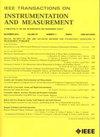Adaptive EPI-Matching Cost for Light Field Disparity Estimation
IF 5.9
2区 工程技术
Q1 ENGINEERING, ELECTRICAL & ELECTRONIC
IEEE Transactions on Instrumentation and Measurement
Pub Date : 2024-11-12
DOI:10.1109/TIM.2024.3488147
引用次数: 0
Abstract
Light field (LF) technology captures information from multiple directions and angles, enabling precise disparity estimation. Recently, matching cost-based approaches have advanced rapidly and shown satisfactory results. However, these methods typically depend on fixed disparity candidates, leading to inadequate utilization of candidates and making them unsuitable for LF scenes with varying baselines. Multidirection line structures of epipolar-plane images (EPIs) associate multiple viewpoints, adaptively perceiving disparity ranges and accurately matching features in real scenes. In this article, we propose an adaptive EPI-matching cost (AEMC) for LF disparity estimation, which is proven to enhance the adaptability across datasets with varying baselines. Our approach calculates pixel-level disparity candidates to keep the predicted distribution near the ground truth (GT) and matches line structures to improve accuracy. Then, to enhance robustness during the adaptive process, we introduce an intra-EPI extraction module that dynamically establishes correlations in the local EPI while supplementing spatial information. Finally, we present a network named adaptive EPI-matching cost network (AEMCNet) for LF disparity estimation. Experimental results demonstrate that AEMCNet achieves state-of-the-art (SOTA) performance and robustness on various LF datasets with different baselines. Specifically, on the sparse LF dataset, our method reduces the mean square error (mse) by 49.6%.用于光场差异估计的自适应 EPI 匹配成本
光场(LF)技术可以捕捉来自多个方向和角度的信息,从而实现精确的差异估计。最近,基于匹配成本的方法发展迅速,并取得了令人满意的结果。然而,这些方法通常依赖于固定的差距候选值,导致候选值利用率不足,不适合基线变化的 LF 场景。外极坐标平面图像(EPI)的多方向线结构关联了多个视点,可以自适应地感知差距范围,并准确匹配真实场景中的特征。在这篇文章中,我们提出了一种用于 LF 差异估计的自适应 EPI 匹配成本(AEMC),事实证明这种方法能增强不同基线数据集之间的适应性。我们的方法会计算像素级差异候选值,使预测分布接近地面实况(GT),并匹配线结构以提高准确性。然后,为了增强自适应过程中的鲁棒性,我们引入了一个 EPI 内部提取模块,在补充空间信息的同时,动态建立本地 EPI 的相关性。最后,我们提出了一种名为自适应 EPI 匹配成本网络(AEMCNet)的网络,用于低频差异估计。实验结果表明,在不同基线的低频数据集上,AEMCNet 实现了最先进(SOTA)的性能和鲁棒性。具体来说,在稀疏 LF 数据集上,我们的方法将均方误差 (mse) 降低了 49.6%。
本文章由计算机程序翻译,如有差异,请以英文原文为准。
求助全文
约1分钟内获得全文
求助全文
来源期刊

IEEE Transactions on Instrumentation and Measurement
工程技术-工程:电子与电气
CiteScore
9.00
自引率
23.20%
发文量
1294
审稿时长
3.9 months
期刊介绍:
Papers are sought that address innovative solutions to the development and use of electrical and electronic instruments and equipment to measure, monitor and/or record physical phenomena for the purpose of advancing measurement science, methods, functionality and applications. The scope of these papers may encompass: (1) theory, methodology, and practice of measurement; (2) design, development and evaluation of instrumentation and measurement systems and components used in generating, acquiring, conditioning and processing signals; (3) analysis, representation, display, and preservation of the information obtained from a set of measurements; and (4) scientific and technical support to establishment and maintenance of technical standards in the field of Instrumentation and Measurement.
 求助内容:
求助内容: 应助结果提醒方式:
应助结果提醒方式:


